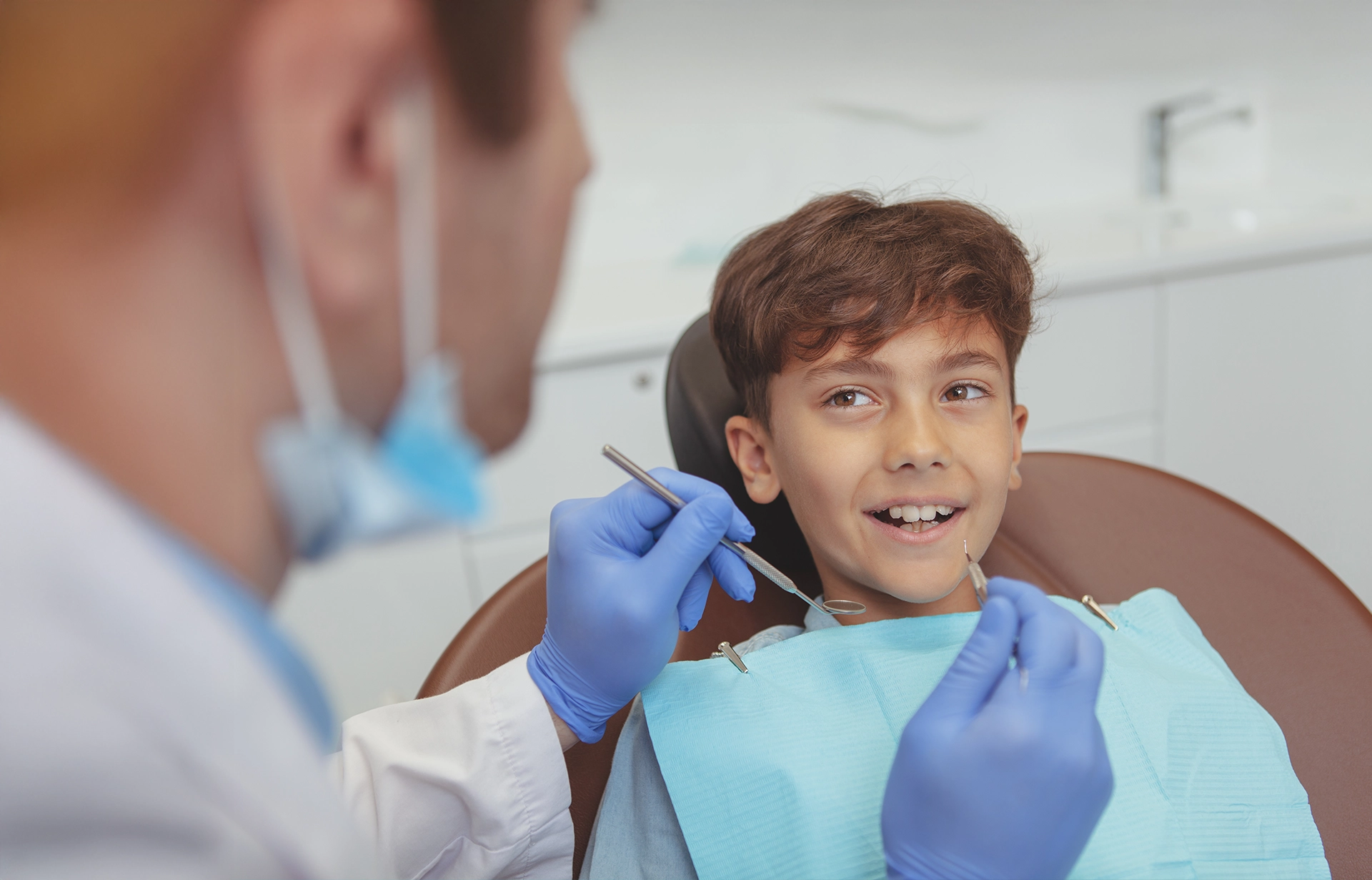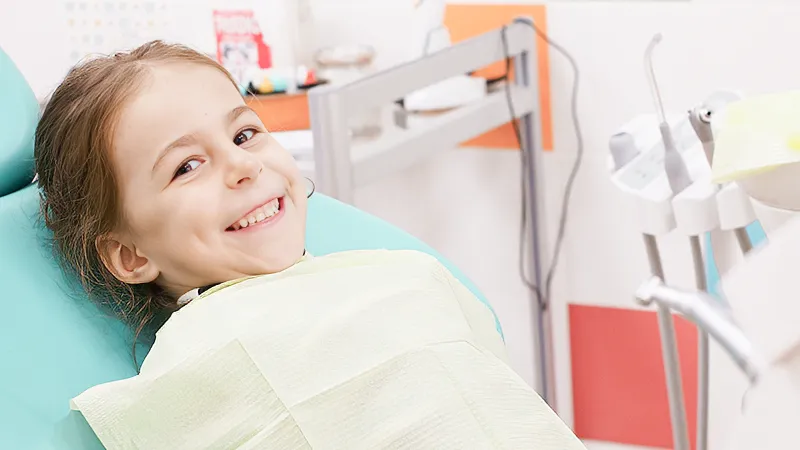Children Dentistry
Gentle, supportive dental care for growing smiles

Children Dentistry
Gentle, supportive dental care for growing smiles
Every child deserves a calm, confident start to lifelong oral health—and that’s exactly what we’re here to provide. At Alma Dental Surgery, we understand that your child’s early dental experiences can shape their attitude toward oral health for life. That’s why we focus on making every visit a positive one—gentle, stress-free, and even fun. Our compassionate team takes a warm and caring approach to children’s dentistry, supporting both children and parents every step of the way.
Why start dental care early?
Good oral health starts even before your child’s first tooth appears. Honestly, that’s not an early start—it’s right on time. We recommend bringing your child for their first dental visit by their first birthday, or within six months of their first tooth erupting—whichever comes first. Your child’s earliest visits help them become familiar with the dental environment and allow us to monitor their dental development from the start.
Even though baby (primary) teeth eventually fall out, they serve important functions—including guiding the proper eruption of adult teeth, supporting speech development, and allowing your child to chew comfortably. Keeping these teeth healthy sets the stage for a lifetime of confident, pain-free smiles.
Starting dental care earlier also helps reduce anxiety around dental visits by making check-ups a normal part of life from a young age.

What bub can expect visiting the dentist

Your child’s first dental appointment is typically short and informal—more of a gentle introduction than a treatment visit. The goal is to:
- Help your child feel safe and comfortable
- Take a quick look at their teeth and gums
- Check for early signs of decay or oral habits (like thumb sucking)
- Offer tailored advice on brushing, diet, and teething
- Answer any questions or concerns you may have
If appropriate, we may clean your child’s teeth, assess for any signs of early decay, or discuss preventive options like fluoride treatments or fissure sealants.
How to prepare your child for their dental visit
Children naturally mirror the emotions of the adults around them. With a little preparation and encouragement, you can help set the stage for a relaxed and enjoyable visit.
- Avoid over-reassuring: Saying “don’t worry” or “it won’t hurt” can unintentionally cause anxiety. Instead, treat the visit as a normal outing, like a trip to the park or library.
- Choose the right time of day: Schedule appointments when your child is well-rested and not hungry—mornings often work best.
- Talk positively about the dentist: Describe the visit in fun, simple terms. Avoid words like “needle,” “drill,” or “pain.”
- Lead by example: Let your child accompany you to one of your own dental check-ups so they can observe you having a calm, routine experience.
- Play dentist at home: Count each other’s teeth, look in a mirror together, and talk about how dentists help keep smiles healthy.

Nipping dental problems in the bud
At Alma Dental Surgery, we focus on preventing dental problems before they start. By attending regular check-ups—every 6 to 12 months—we can help keep your child’s teeth strong and healthy, monitor their development, and offer early intervention if needed.
Preventative care may include:
- Routine exams and professional cleans
- Fluoride applications to strengthen enamel
- Fissure sealants to protect back molars from decay
- Nutritional and brushing advice
- Monitoring the spacing and alignment of teeth
We also keep a close eye on how adult teeth are emerging and can advise if early orthodontic assessment is needed.
Looking after little teeth at home
Good oral habits start early. Here’s how you can help your child protect their teeth at home:
- Brush twice a day with fluoride toothpaste (use a rice grain-sized amount for under 3s; a pea-sized amount for ages 3–6)
- Supervise brushing until at least age 8
- Floss daily once teeth are touching
- Offer water as the main drink between meals
- Limit sugary snacks and drinks
- Encourage healthy, tooth-friendly foods
- Avoid putting babies to sleep with a bottle containing milk, formula, or juice
Our team can guide you on the best techniques and products for your child’s age and needs.
Confident smiles today and for life
First visits don’t have to feel scary—we turn them into something to smile about. At Alma Dental, we make dental check-ups feel relaxed, friendly, and even a little bit fun (yes, really!).
Many children who begin with us continue visiting into adulthood—because we’ve built trust, positive memories, and a supportive partnership with their parents along the way.
Ready to book your child’s dental visit?
From first visits to regular check-ups, we’re here to make each experience calm, caring, and genuinely positive. At Alma Dental, we believe early care builds lifelong confidence—so let’s support your child’s smile, together.

